The Outdoor Exhibition offers a reproduction of traditional rural life, as well as modern and contemporary streets. Prominent among the exhibits of the traditional folk life are stone pagodas, Jangseungsang (spirit posts to which villagers prayed in an attempt to prevent calamity and to bring a bountiful harvest), waterwheels, and ox-driven millstone.
Ochondaek
Ochondaek is a residential unit, which was donated by the Yeongnam Nam family residing in Won-gu 1-ri, Yeonghae-myeon, Yeongdeok-gu, Gyeongsangbuk-do Province, and transferred to the National Folk Museum of Korea. It was constructed in 1848 and had been occupied by the families of the donor until the early 1980s. At the time of transfer in 2010, the daily supplies contained in the house were also studied and collected for exhibition.
70's and 80's, Streets of Memories
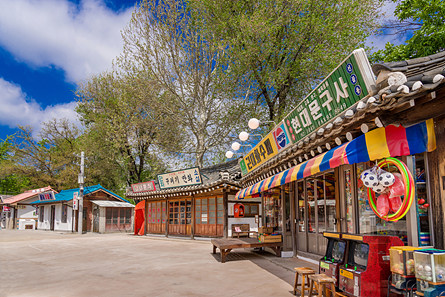
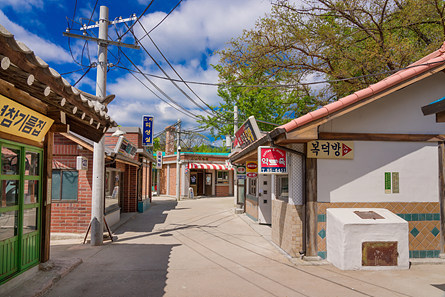
70's and 80's, Streets of Memories recreates what the streets and alleys of a typical neighborhood in Seoul may have looked like during the 1970s and 1980s. From the friendly hole-in-the-wall shop to the stationery store, a comic book rental shop in front of an elementary school, or the bathhouse that served as the neighborhood salon, these streets capture our daily lives back in the day.
1. Bukchon National Peoples’ School
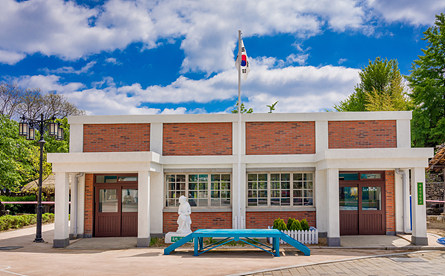
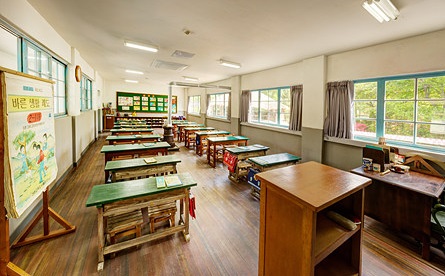
Gungminhakgyo, which literally translates to "national peoples' school," was the name for primary education institutions before being renamed chodeunghakgyo meaning "elementary school" on March 1, 1996. The classroom sign which shows traces of the double-shift schooling system, a statue of a girl reading a book, together with the abacus, pump organ, and briquette stove, all provide a glimpse into the school life of elementary students in the 70s and 80s.
2. Hyeondae (Modern) Stationery
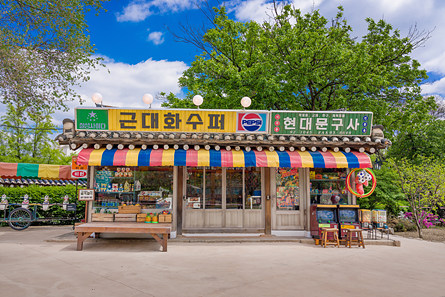
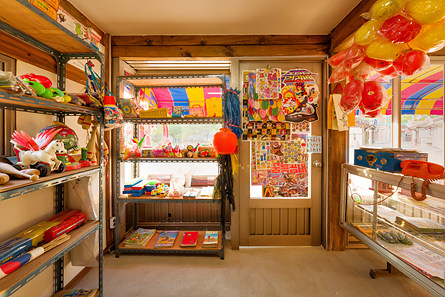
This store sells all sorts of school supplies, toys, and snacks. Displayed in the store are multiple items that evoke nostalgia: magnetic snap-pencil cases popular at the time, tools for collecting insects, bags containing a mix of learning resources, snacks, ttakji(Korean traditional game involving paper squares), dalgona(Korean traditional game involving candy), and paper dolls.
3. Geundaehwa (Modernization) Supermarket
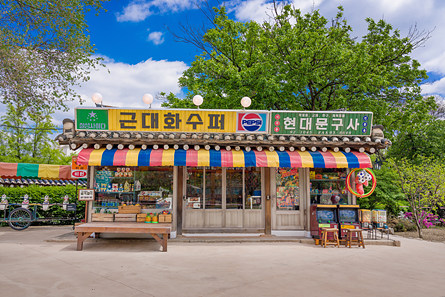
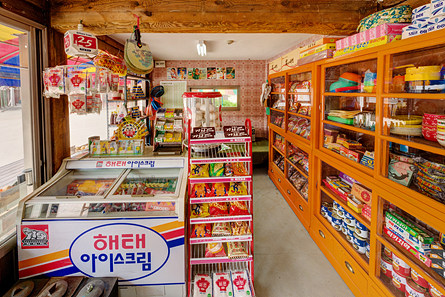
This small-scale store sold daily necessities and household goods in the neighborhood. Displays of food items such as Miwon seasoning and Samyang Ramyeon noodles and household goods such as Lucky toothpaste, Dial soap, and Hi-Ti detergent, all channel the appearance and vibe of a neighborhood hole-in-the-wall store. Feel the warmth of the old days when neighbors would gather and chit chat on the benches often found in front of such stores.
4. Kkureogi (Little Mischief) Comics
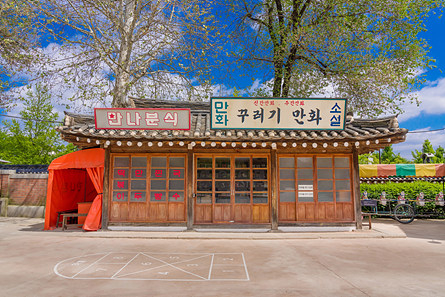
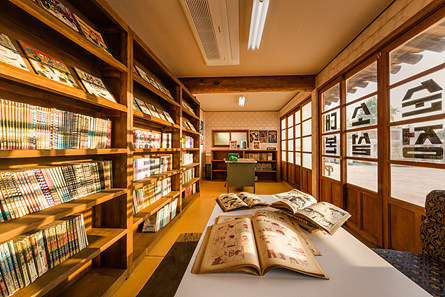
This store allows customers to borrow comic books or read them. In the 1970s and 1980s, when cartoons were the best form of entertainment, cartoon shops were a must have after school course for students. You can relive popular cartoons of the time through comic books filled with walls and color TV on the other side.
5. Manna (Yummy) Snacks

It is a place that sells tteokbokki(spicy, stir-fried rice cake), fish cake, dumplings, steamed bread, etc. The large tteokbokki griddle under the awning and the affordable snacks will bring back fond memories of school in the good old days.
6. Hwagae (Blossoms) Barbershop
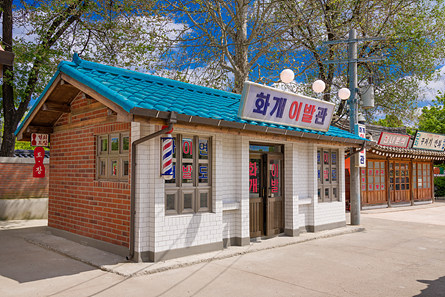
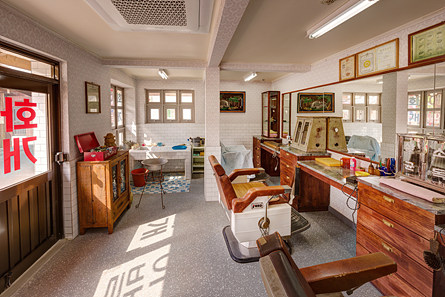
This is a place where men's hair is trimmed or bearded, and they were responsible for the hairstyles of the fashionable. In 1970s and 1980s, they usually used only scissors for haircuts since long hairstyles were in vogue for men. Get a feel for the vibe of barbershops at the time with chairs, hair-cutting tools, and shaving tools actually used in Jongno's Hwagae Barbershop back then.
7. Pungnyeon (Good harvest) Mill
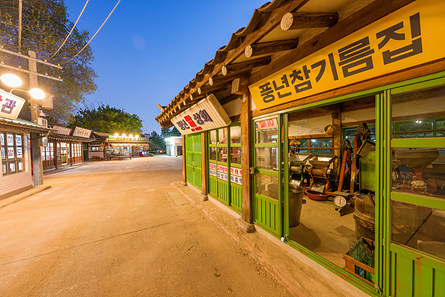
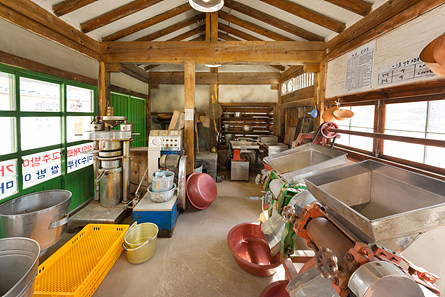
It's a place to grind grain and peppers, make rice cakes, and press oil. The various machines worked ceaselessly with customers needing rice powders produced for holidays, sirutteok(steamed rice cake) for autumn rite, and chili pepper powder for kimchi-making season.
8. Yaksok (Promise) Tearoom
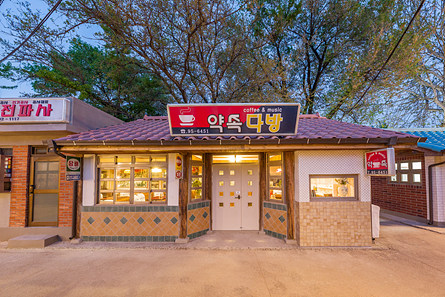
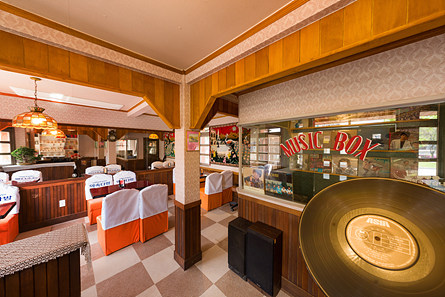
Music tea room is a place to drink tea while listening to songs played by a DJ(disc jockey), and it was a meeting place for discussing philosophy and love. Enjoy the music that was popular at the time in the atmosphere of Music tea room, which has a menu with Sssanghwacha(medicinal tea), Doraji whiskey tea and pay phones with memo.
9. Star Boutique
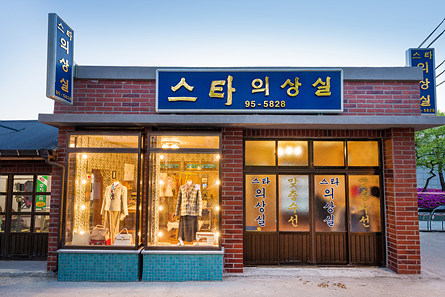
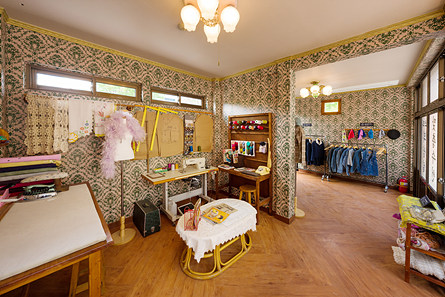
This is where clothes, mainly for women, are sold and tailored. Up until the 1980s, such boutiques were found everywhere and choosing your own fabrics and designs was a common thing. Visitors can experience the fashions and trends of the 70s and 80s through the display windows and try-on costumes.
10. Seoul Photo Studio
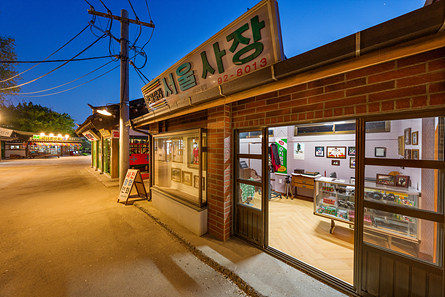
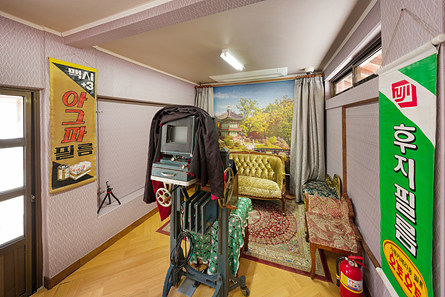
This is a place where film photographs are taken, developed and printed. In the 70s and 80s, studios were located in every neighborhood and people would have their pictures taken for special occasions such as birthdays, babies’ 100-day celebrations, first birthdays, weddings, and sixtieth birthdays. Various pictures hanging in the photo studio contain a scene from our lives.
11. Jonghap (General) Appliance Store
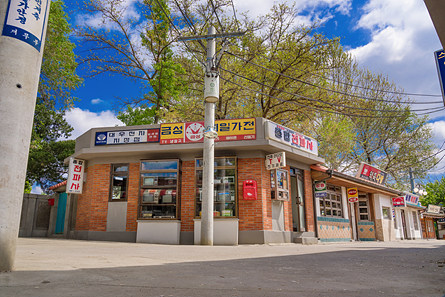

Repairing and selling televisions, radios, phonographs, and other appliances, such stores increased in number during the 1980s when home electronics were popularized. Looking through the glass windows, the various electronics on display show us what was trendy back then and hint at the lifestyles of the time.
12. Jangsu (Longevity) Bathhouse
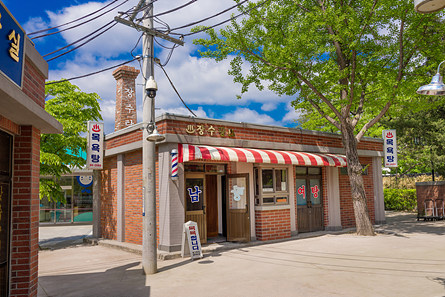
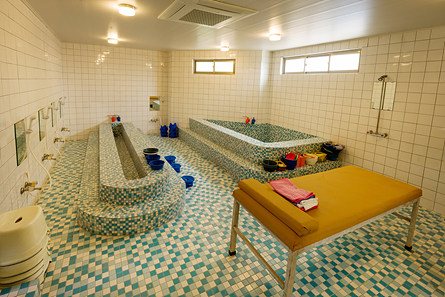
This is a public bathhouse where neighborhood residents paid a fee to bathe together. Here, visitors are able to see the typical features of bathhouses and bathing culture in the 70s and 80s such as the bagaji-tang, a small bathtub that people would sit around with their bagaji(a small plastic bucket); beds where customers could have their skin exfoliated by professional “scrubbers”; barbers at the men’s baths; and the shoeshines who often visited bathhouses to shine the shoes of bathing customers.


